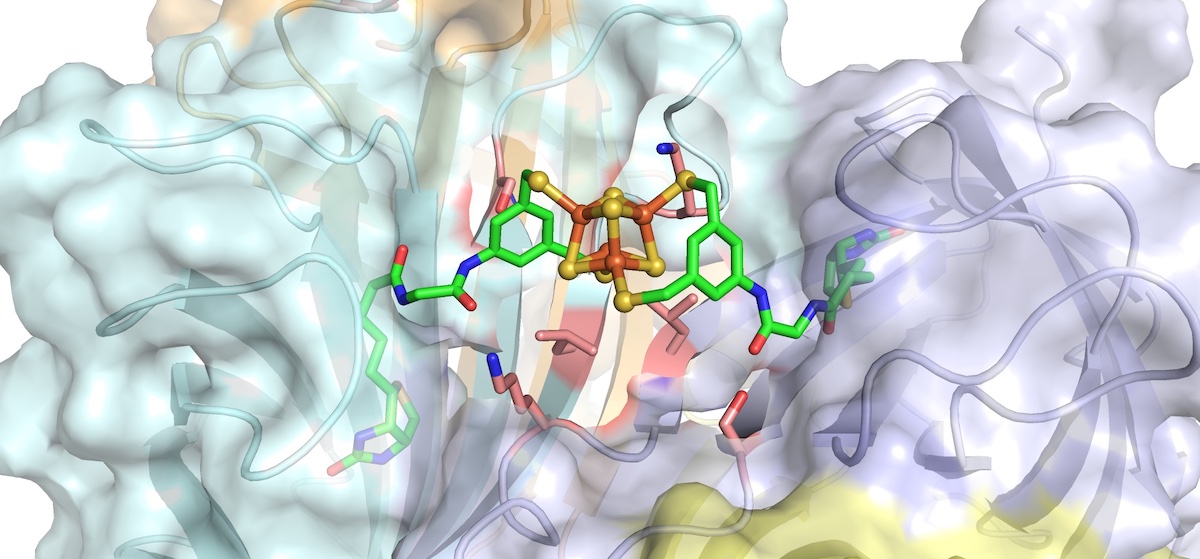Synthesis and Characterization of an Artificial Iron-Sulfur Metalloenzyme
The study of synthetic iron-sulfur clusters has allowed elucidation of the molecular basis of the active sites of iron-sulfur proteins. Apart from their numerous biological activities, FeS-clusters have been utilized outside of their biological scaffold in an expanding number of areas such as biomimetic materials, redox mediators and catalysis. However, all of those active-site analogs suffer from poor solubility and limited stability in protic media. In order to bridge these synthetic and biological systems, we set out to synthesize an artificial iron-sulfur metalloenzyme by biotin-streptavidin technology. We have synthesized a bis‑biotinylated‑[Fe4S4] cluster (Biot2‑Fe4S4 hereafter), which is, to the best of our knowledge, the first synthetic iron-sulfur cluster that is stable in aqueous solutions. Following the synthesis of the abiotic cofactor Biot2-Fe4S4, it was anchored within homotetrameric streptavidin (Sav) to afford the artificial metalloenzyme Biot2-Fe4S4 · Sav, Scheme. Having these two systems at hand allowed us to scrutinize the effect of the second coordination sphere between the cofactor and the host protein. The influence of mutations in the binding pocket on the redox properties of the cluster was examined by cyclic voltammetry. Further, we evaluated the catalytic performance of Biot2‑Fe4S4 and Biot2‑Fe4S4 · Sav for CO2-reduction to afford alkanes and found the protein environment to strongly affect the reactivity of the cluster.

Scheme: Close-up view of the docked model Biot2-Fe4S4 · Sav WT, close lying residues are highlighted as stick (flesh colour).